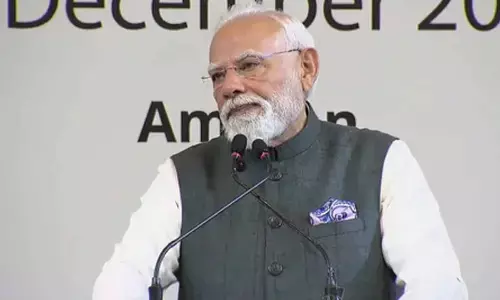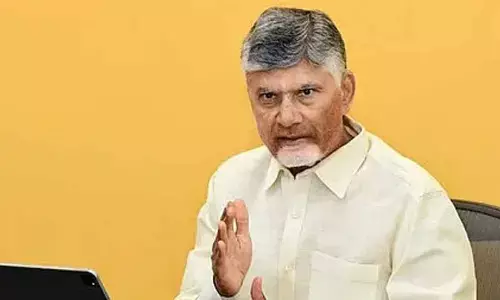Only a caste, economic and income census can redefine India’s socio-economic landscape

Caste has been a defining feature of Indian society across equations
India, a land of staggering diversity, continues to grapple with profound socio-economic disparities among its populace. Only a minuscule percentage of people lords over the majority of national resources, facilities, privileges, opportunities and responsibilities. A tragic irony is that those comprising SCs, STs, and OBC estimated to be around 75 per cent of the population, have over the years been victims of socio-economic and educational exclusion, deprivation and institutional atrocities.
No doubt, things have certainly improved ever since India started following the rules as prescribed in the Constitution but we have miles to traverse to achieve the goal of an inclusive Viksit Bharat for which a 2047 deadline has been fixed. It is quite possible that the Indian economy becomes a $30 trillion economy by then but I will keep my fingers crossed so far as the inclusivity of the attributes of a developed nation are concerned. If we are really serious about making a new and inclusive India, we need to know well the socio-economic and educational conditions of different social groups in general and those who have been on the margins for decades in particular. Towards addressing this, the Union government conducts periodic census exercises that delve deep into demographic data, including caste, economic status, and income levels. These exercises are not just statistical endeavours but pivotal tools in shaping policies and interventions aimed at equitable development and social justice. However, their limitations underscore the need for a wholesome caste-economic census, a demand which has gained momentum in recent years.
Barring a few political parties, the majority are in support of a comprehensive caste-economic-income census and fine-tuning of welfare schemes and affirmative measures on the basis of its findings so that the idea of last mile development and empowerment is fructified in a sustainable manner.
One has to understand that caste has been a defining feature of Indian society for centuries, influencing social dynamics, economic opportunities and political landscapes. The caste census, distinct from the regular population census, will provide invaluable insights into the socio-economic status of various caste groups. It will help identify marginalized communities that have historically faced discrimination and exclusion from mainstream development processes. By mapping the distribution and socio-economic indicators of different castes, policymakers can tailor affirmative action programs such as reservations in education, employment and political representation. These initiatives will further uplift disadvantaged communities, mitigate historical injustices and foster inclusive growth.
Similarly, the economic details will capture data related to economic activities across sectors and regions and will provide a comprehensive snapshot of the country’s entrepreneurial landscape, from small-scale enterprises to large industries. This granular data will aid in formulating targeted policies to support economic growth, promote entrepreneurship, and enhance productivity in an inclusive manner. Moreover, the economic data will serve as a crucial benchmark for assessing the effectiveness of government schemes and initiatives aimed at fostering economic development. By identifying growth hotspots and areas of underdevelopment, policymakers can channel resources strategically to promote balanced regional growth and reduce disparities between urban and rural areas.
We all know well that income inequality remains a pressing issue in India, where a significant portion of the population struggles to meet basic needs. People’s income details will help us in quantifying these inequalities by capturing data on household incomes, expenditure patterns, and wealth distribution. This data will be instrumental in designing targeted welfare programmes and social safety nets to alleviate poverty and improve living standards. Moreover, the income data will be extremely helpful in assessing the impact of economic policies on different income groups. It will provide empirical evidence to gauge the effectiveness of poverty alleviation measures, such as subsidies, pensions, and financial inclusion programmes. By ensuring that benefits reach those who need them the most, the caste and income census will contribute to fostering a more equitable society.
I am of the firm opinion that the combined insights from caste, economic, and income census exercises will form the bedrock of evidence-based policymaking in India. They will enable them to identify vulnerable populations and prioritize resource allocation, and monitor the progress of development initiatives over time. This data-driven approach is essential for tackling chronic socio-economic disparities and advancing the goal of inclusive growth. Furthermore, the census exercises will facilitate transparency and accountability in governance by providing reliable data for public scrutiny and academic research. They will empower civil society organisations, researchers and advocacy groups to press for policy reforms that address systemic inequalities and promote social justice. Yet one wonders why some people are opposed to conducting a comprehensive census exercise, which will be an indispensable tool for promoting inclusive development, social cohesion and ensure equitable distribution of opportunities. By harnessing the power of data, India will chart a path towards a more just and prosperous future for all its citizens.
Let there be no doubt that only a holistic empowerment of all sections of society will help us address the colossal issue of caste-based discrimination, which has a deep-rooted history in India, spanning millennia, shaping social, economic, and political structures across the subcontinent. Originating from ancient Vedic texts, where society was stratified into varnas based on occupation, caste divisions evolved into a complex hierarchical system over time, doing an irreparable damage to our social ecosystem. Over centuries, the caste-based hierarchical system became rigid, with each caste assigned specific roles and privileges. A vast chunk of the population among us faced severe social ostracism and economic deprivation. Their marginalization was not merely social but also institutionalized through practices like untouchability.
Post-independence, our Constitution has certainly outlawed discrimination based on caste and introduced quota in education and employment for historically marginalized communities, aiming to uplift them but in vain. Still caste-based discrimination, deprivation and denial persist in various forms.
Economic disparities, unequal access to education, and persistent social prejudices continue to affect millions, challenging our collective quest for social equality and inclusive development. Efforts towards social justice and empowerment remain crucial in ensuring a more equitable future for all Indians.
















